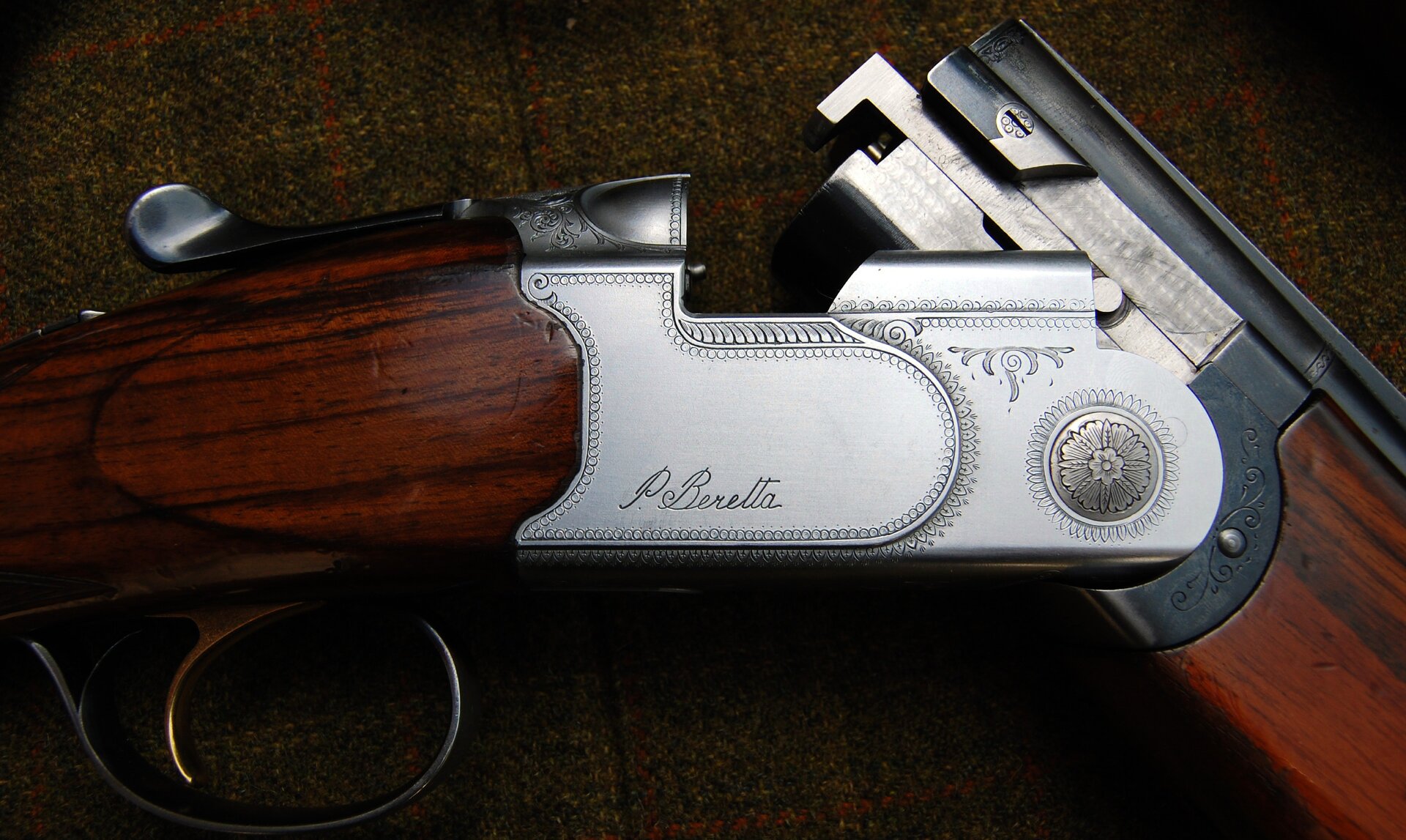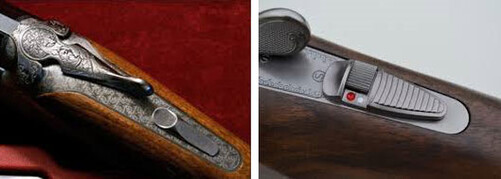The safety catch is common to all those who shoot game, but how is it used correctly? Who decides what’s right and wrong when it comes to safe gun handling. Mike Smith looks for answers.
When does a point of view become a rule? The former can be flexible and shift in response to reasoning or new information – perhaps. A rule is characterised by certainty and applied rigorously. When it comes to the use of safety catches in shooting you’d think it straightforward, but it appears there is some latitude toward alternative views on the best way to handle a shotgun in the field - amongst Guns, between individual shoots, even experts themselves find room enough to disagree.
Visualise your own safety-catch technique
You might like to contribute? Pick your gun up (check it’s empty, of course!) and visualise yourself on peg with a bird coming your way. Present, as you normally do, move, mount and imagine going through the process of firing. Now, two questions: When did the safety-catch come off? And, when did you place your finger on the trigger?
Within that scenario there is an assumption: that the safety catch on your game gun is placed ON in the beginning. Presumption might further suggest the safety catch is automatic and engaged mechanically as the gun is opened. But whereas all break action shotguns intended for game would have a safety fitted, it is questionable whether the devise would always be automatic. It is entirely probable that if a modern over-and-under is used the safety mechanism is likely to be manual, requiring deliberate manipulation ON and OFF. Of potential concern with manuals another choice presents – the ‘OPT OUT’: a decision to keep the safety catch OFF. Permanently!
Safety-catch and trigger etiquette
Some shoots prefer safety catches to be automatic. One very prominent Downland shoot in East Sussex requests that all safety catches on all shotguns be automatic, an insistence forming part of the shoot’s risk assessment. Shoot managers will always make reference to safe gun handling in their pre-shoot briefing, and within that, invariably, there is tacit faith that safety catches are automatic, or, at the very least, if manual, will be applied consistently.
And what about fingers on triggers? It is a matter of functional necessity that the finger should come to the trigger, but when exactly? Should the trigger be located early to allow for maximum control? Or can the finger be expected to strike the trigger only at the moment of firing? Further complication arises with the combined tasks of removing the safety catch and finding the trigger. Experience points to many accidental discharges occurring just as the safety is pushed off, the finger tightening on the trigger inadvertently.
Who dictates what’s wrong or right when it comes to safety-catch and trigger etiquette? For such recommendation we look to shooting mentors, commentators and instructors; guidance promoting safe practise constitutes an important part of our shooting heritage. Broadly speaking this information springs from two sources: well established Shots offering the benefit of their reasoning on safety to others, and, secondly, direction from professional instructors.
Sir Joseph Nickerson
Insights offered by distinguished Shots are of course valued. But with long experience there may develop an unwillingness to re-appraise gun handling technique; thus, by default, a point of view is portrayed as an immutable rule! In an autobiography of his shooting life, Sir Joseph Nickerson advises on safety-catches: “It should be pressed forward with the side of the first joint of the thumb, not by the ball of the thumb, so that you do not need to change the position of your hand round the stock.” No doubt it worked for Sir Joseph, but give it a dry run next time you handle a gun. At best it’s awkward, at worst - with wet, cold hands pressed into action at the chance of a quick shot - alarmingly unreliable!
Arthur Hearn and Percy Stanbury
It is advice offered by shooting instructors that we must weigh with particular significance. Here, principally, there is an irrefutable fact - that techniques gained from this source are the subject of relentless and intense scrutiny. Any method of gun handling judged insufficient in terms of safety would simply not endure. In 2009 when the Land Based Sector Skills Council studied the complex handling routines employed in double gunning before submission to National Occupational Standards, it was found that safety references laid down by Arthur Hearn and Percy Stanbury could not be bettered – their methods just as relevant to our modern context 60 years on!
Back to your own self-observations - if you conclude that your safety catch is pushed off as the gun is moving to the shoulder and that the finger is brought to the trigger at more-or-less the same time then such tendency is probably common to the majority of game shooters. Are there safety implications to this? Hearn considers the point at which the safety slide is pushed forward as “a very delicate question.” Stanbury is firm on the matter - advocating that the safety catch is removed at the point where the gun is presented to the target, when the gun is stationary; finger off the trigger, and before mounting begins. Separating the operation of the safety catch from the movement of the gun to the shoulder keeps the procedure simple - the process is certain, signalling readiness and intent.
Robert Churchill
A commonly indulged misdemeanour is bringing the finger to the trigger overly soon. The accepted wisdom against this being that the earlier the finger is there the more likely the gun is to go off, before the shooter is ready, with resultant dangers. There is agreement that the finger should remain off the trigger until the gun is near to or at the shoulder. “Never let your finger touch the trigger until the actual moment of firing,” wrote Robert Churchill. “In the ready position the trigger finger should lay along the right lock plate,” he orders, “and it should stay there until the barrels are aligned on the target and the butt comes into the shoulder.” Some prefer to place the finger against the trigger guard - possibly this offers better control and lessens the chance of the finger haphazardly ‘slapping’ at the trigger.
Final words from Chris Cradock
Ironically, a minority of shooters regard the manipulation of a safety catch as contributing to the very problem it supposedly mitigates. Operationally, they argue, the enforced working of a safety catch constitutes little more than fumbling around the one area of the shotgun uncertainty shouldn’t occur. Worse is the suggestion of over reliance on the safety catch, offered by some as sufficient excuse for sloppy gun handling.
The majority view considers the safety catch a rather more positive investment in safety, however, combined with the disciplined, axiomatic dictum: ‘finger to trigger only when ready to fire.’ The third component of our ‘safety trinity’ is an unstinting perception of where barrels point. For Chris Cradock, the definitive shotgun teacher, muzzle awareness formed a crucial and primary focus, advocating “100% awareness of one’s muzzles and gun point at all times.” It is entirely right that we remain heedful as the great man encourages, “muzzle awareness should be cultivated and practised until it is as natural as breathing.”
Enjoyed this article and want to know more?
Why not contact us at Glenzier Sporting. Mike Smith has run the Whithorn shooting ground for 20 years and offers teaching lessons and gun fitting.


